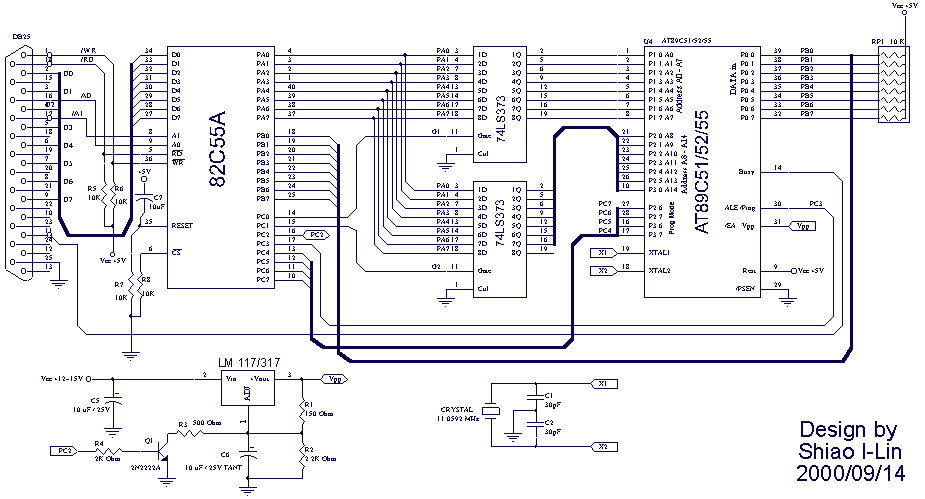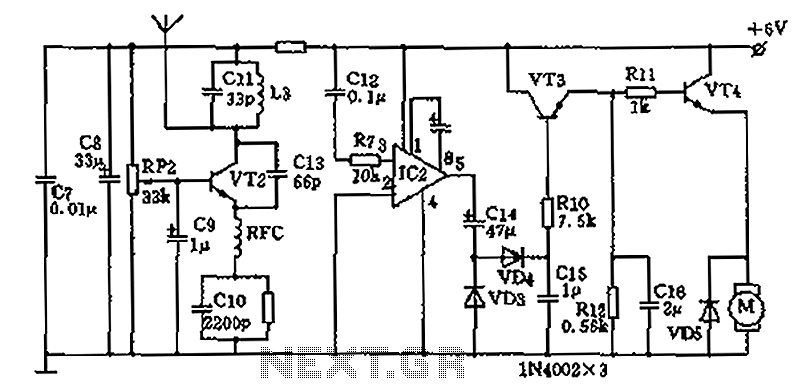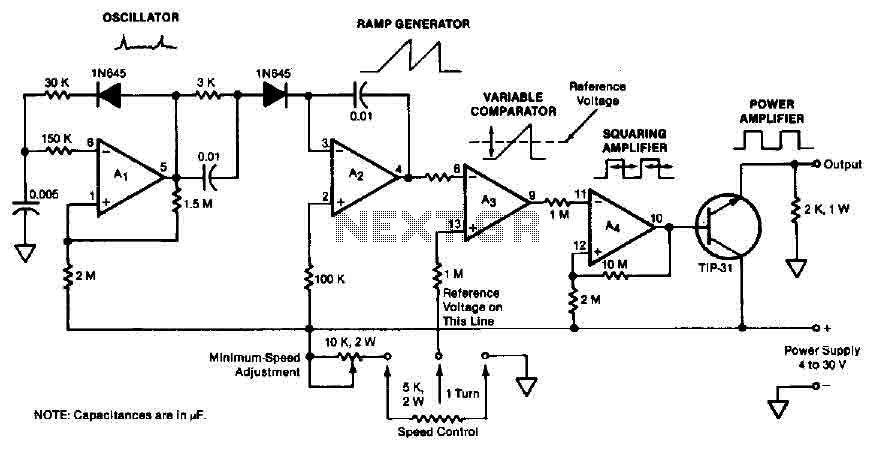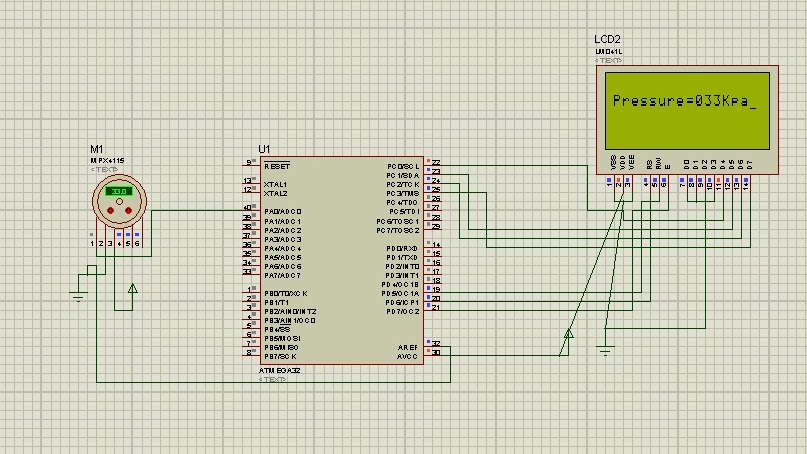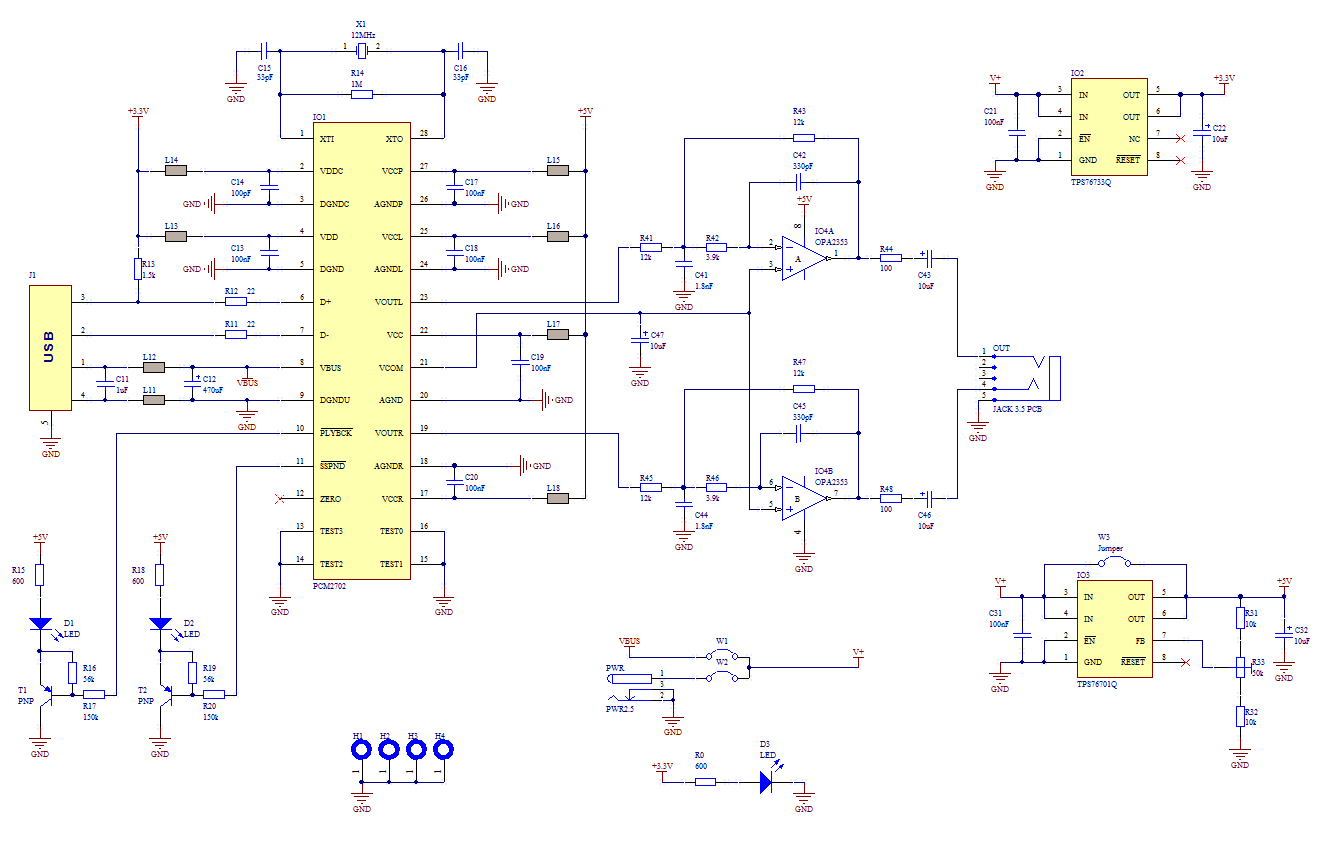
L200 DC Motor Speed Control
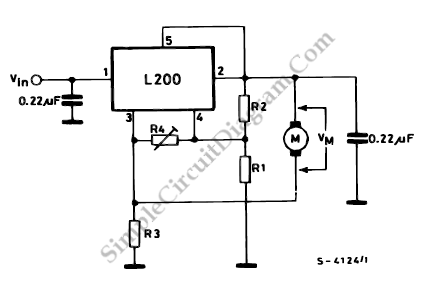
This diagram illustrates the usage of the L200 device for controlling the speed of permanent magnet motors. By utilizing resistors R1 and R2, the desired speed can be achieved.
The L200 is a versatile integrated circuit designed for various applications, including speed control in permanent magnet motors. The circuit typically consists of the L200 chip, which regulates voltage and current to provide efficient motor control.
In this schematic, R1 and R2 are critical components that set the reference voltage and current limits, allowing for precise control over motor speed. The values of these resistors can be calculated based on the desired speed and motor characteristics. A potentiometer can also be employed in place of R2 for adjustable speed settings.
Additional components may include capacitors for filtering and stability, as well as diodes for back EMF protection from the motor. The L200 also requires appropriate power supply connections, typically a DC voltage source, to operate effectively.
The output of the L200 is connected to the motor, where it modulates the voltage supplied to the motor windings. By adjusting the resistance values, the user can finely tune the motor's speed to meet specific application requirements, ensuring optimal performance and efficiency.
Overall, the L200 provides a robust solution for speed control in permanent magnet motors, offering flexibility and precision in various electronic applications.This diagram tells us about how to use L200 device for the speed control of permanent magnet motors. By means of R1 and R2, we can obtain the desired speed,.. 🔗 External reference
The L200 is a versatile integrated circuit designed for various applications, including speed control in permanent magnet motors. The circuit typically consists of the L200 chip, which regulates voltage and current to provide efficient motor control.
In this schematic, R1 and R2 are critical components that set the reference voltage and current limits, allowing for precise control over motor speed. The values of these resistors can be calculated based on the desired speed and motor characteristics. A potentiometer can also be employed in place of R2 for adjustable speed settings.
Additional components may include capacitors for filtering and stability, as well as diodes for back EMF protection from the motor. The L200 also requires appropriate power supply connections, typically a DC voltage source, to operate effectively.
The output of the L200 is connected to the motor, where it modulates the voltage supplied to the motor windings. By adjusting the resistance values, the user can finely tune the motor's speed to meet specific application requirements, ensuring optimal performance and efficiency.
Overall, the L200 provides a robust solution for speed control in permanent magnet motors, offering flexibility and precision in various electronic applications.This diagram tells us about how to use L200 device for the speed control of permanent magnet motors. By means of R1 and R2, we can obtain the desired speed,.. 🔗 External reference

